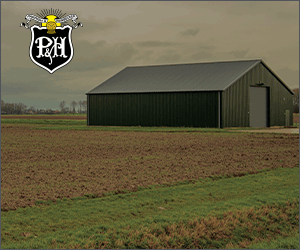Research roundup
FIND OUT WHAT’S NEW IN THE WORLD OF RESEARCH
DNA barcoding for weeds
Megan Cowie
An innovative University of Guelph technique called DNA barcoding is paving the way for quick weed identification and more effective weed control.
DNA barcodes are short, identifiable segments of DNA that are unique to every species. A team of Guelph researchers, led by Professor Steven Newmaster from the Biodiversity Institute of Ontario (BIO), is creating a barcode database of every weed species in Ontario.
As soon as next year, farmers will be able to send in a weed sample at any life stage. Then the BIO team will analyze its DNA and use the database to identify it in a matter of days.
So far, Newmaster and his team have catalogued more than 300 weed species in Ontario in a project called the Weed Barcode of Life project (Weed BOL). So far, this project has more than 1,000 barcodes and has completed its first goal of barcoding all the weeds and invasive alien plants in Ontario last year.
Next, says Newmaster, comes Canada, followed by North America. Partners from India and China are currently working to add to this initiative as well.
“We hope to barcode every weed on the planet,” says Newmaster. “Within the next few years, farmers will be able to quickly identify weed seeds, seedlings and invasive species, which means they’ll know what to spray for right away. This will reduce the
use of herbicides and help us to understand distribution and monitor invasive species as they establish in the province.”
Newmaster’s University of Guelph collaborators are Clarence Swanton, Francois Tardif and Carole Ann Lacroix. He is also working with Mike Cowbrough, Ontario Ministry of Agriculture and Food and Ministry of Rural Affairs (OMAF and MRA), and Eric Page, Agriculture and Agri-Food Canada.
Funding for this research is provided by Grain Farmers of Ontario, as well as OMAF and MRA. •
Working to increase red clover uniformity
Laura Montgomery
Red clover improves soil organic matter, decreases soil compaction and fixes nitrogen. However, it is difficult to maintain full red clover coverage when seeded with winter wheat. Non-uniformity can be attributed to wheat competing for moisture and other resources required by red clover.
To make up for the inconsistency, nitrogen fertilizer is often applied to the entire field in the next year. But that leads to potential nitrous oxide emissions and nitrate leaching.
To address this situation, University of Guelph plant agriculture Professors Ralph Martin and Bill Deen are leading a team investigating multiple strategies to improve red clover uniformity.
Currently, field and greenhouse trials are underway throughout southern Ontario to test how moisture, soil topography and different varieties will improve red clover uniformity.
Researchers expect some results by next spring.
“An advantage is we don’t have to worry about high yield,” says Martin, “we just want the clover to be uniform.”
Collaborators include plant agriculture Professors Steve Bowley and Hugh Earl as well as post doctoral fellow Amelie Gaudin and graduate students Cora Loucks and Sabrina Westra.
Funding is provided by Grain Farmers of Ontario, Loblaw as well as OMAF and MRA. •
Research Roundup is provided by members of SPARK (Students Promoting Awareness of Research Knowledge) at the University of Guelph’s Office of Research. For more information, contact a SPARK writer at 519-824-4120, ext. 52667.






















